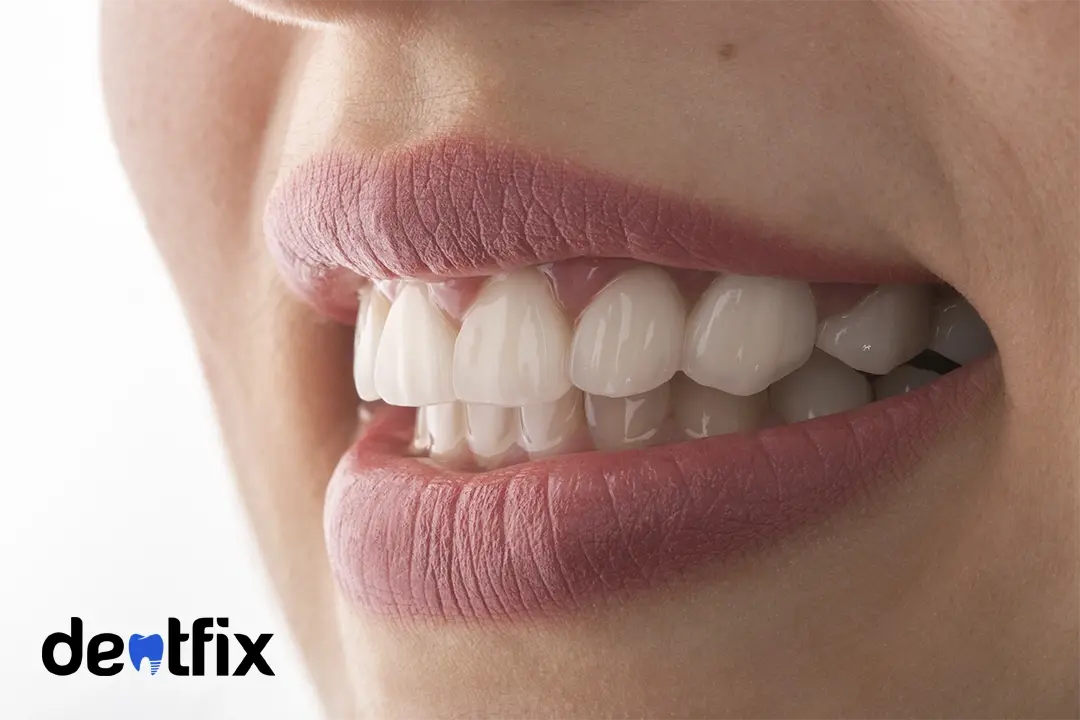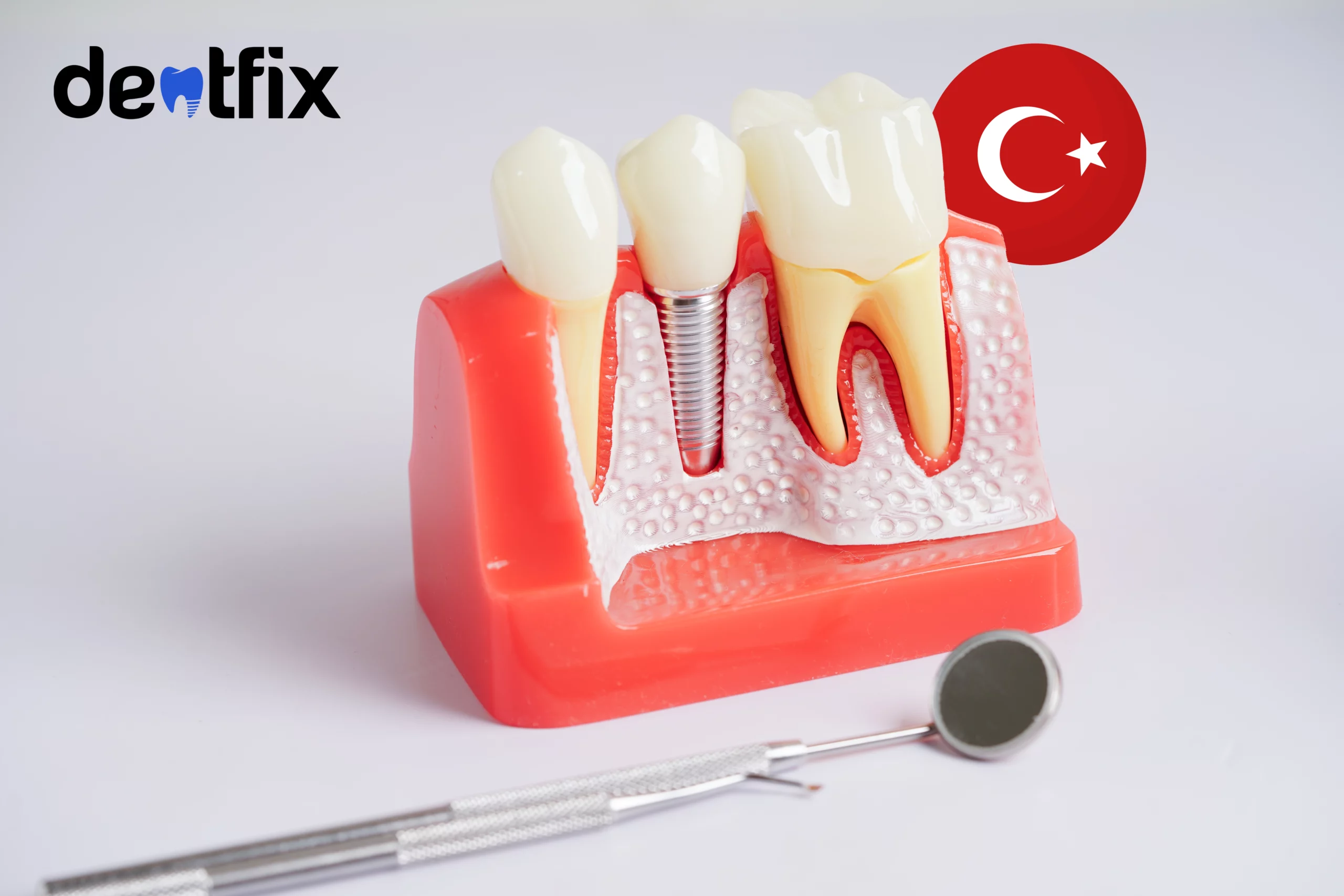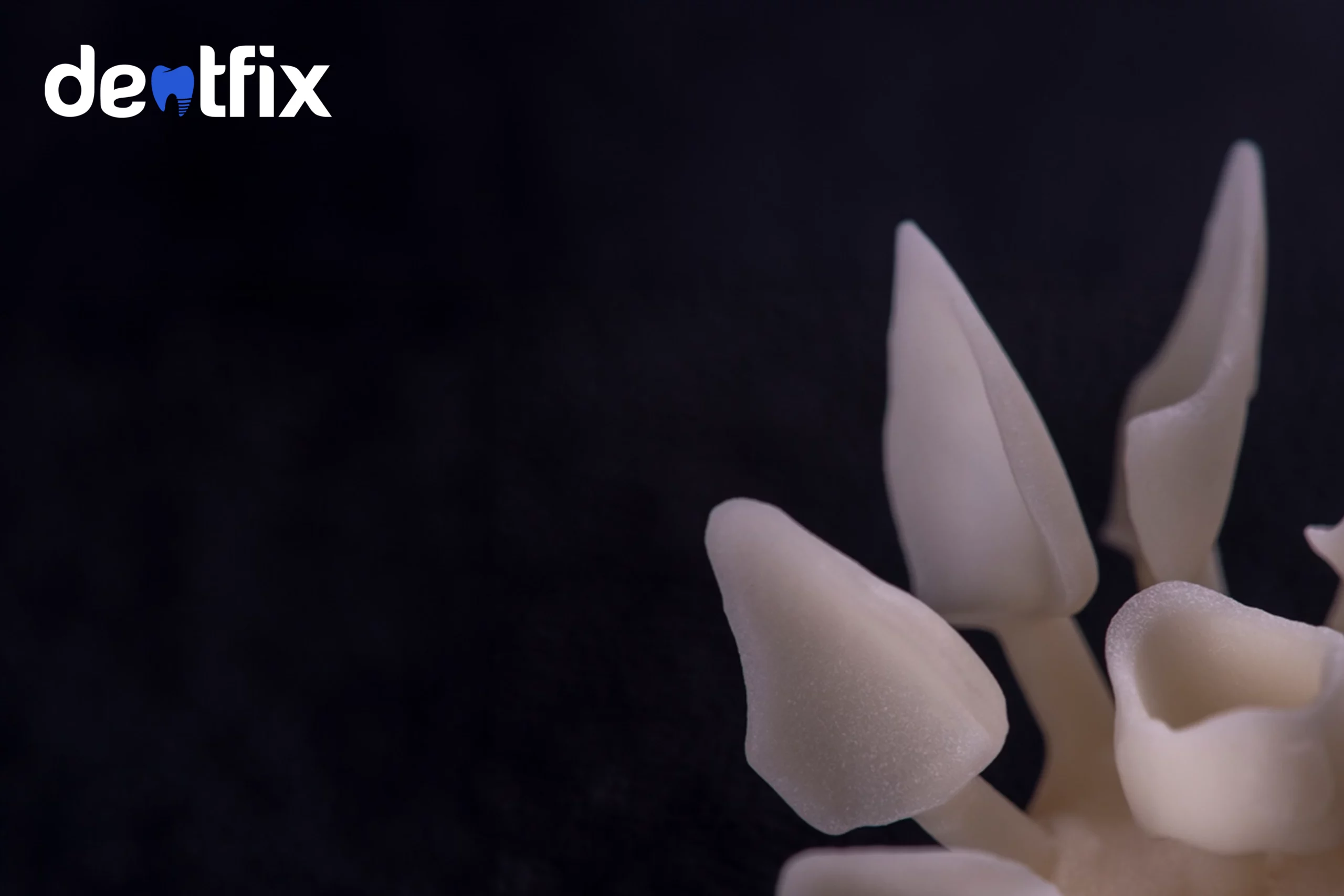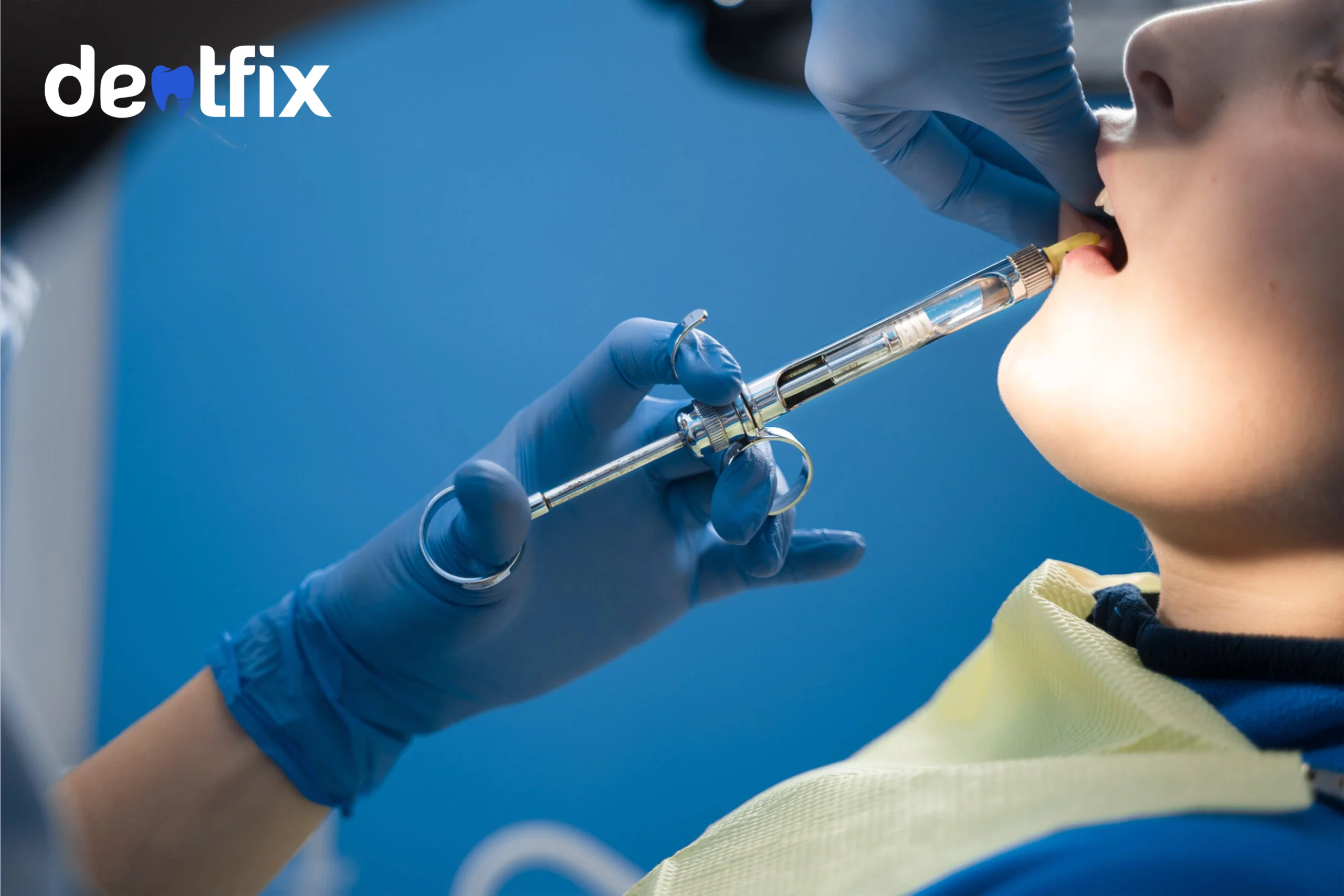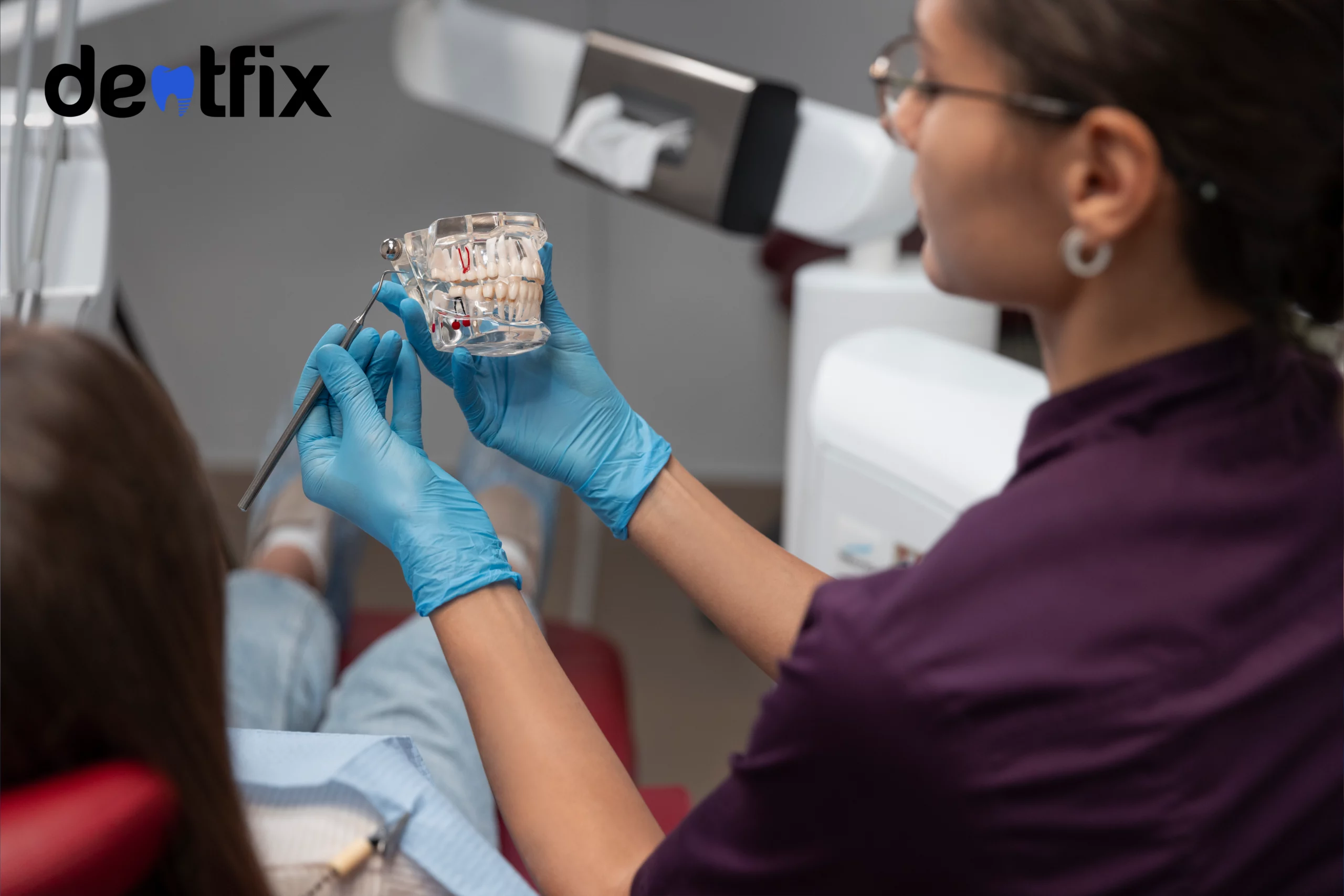Flossing is one of the most important steps of a dental hygiene routine. Flossing allows you to reach the areas that you can’t with a toothbrush. But if you have implants? If there are inorganic artificial materials between your teeth? Can you floss dental implants? Can that create a problem? Well, not that much. There are some steps you just have to be careful about. And of course, we are here to warn and inform you about them.
That’s why in this article our aim is to explain questions such as can you floss dental implants or how to floss dental implants. No need to wait! Let’s get started.
Flossing your implants: Is it possible?
Yes! Of course, it is possible. With the help of modern technology and medical sciences, there are several ways for you to floss easily. However, it is crucial to be very careful with your implants while doing it because you can damage them unintentionally.
Generally, implants last for 15 to 20 years. But if you don’t floss or take good care of them, their lifespan can be less than 15 years. And that’s not the only bad thing you can face. Flossing regularly is as important as brushing your teeth regularly. Problems such as gum disease, receding gums and bone loss, and cavities on neighbor teeth can happen if you skip flossing. So, get ready, because we are going to show you how to floss your implants to keep your smile as clean as possible!
How can you floss dental implants?
First of all, you have to choose the right floss. Waxed flosses are far better than unwaxed ones when it comes to flossing your implants. Why? Because they slide easily on the surface. Unwaxed flosses can be harder to use and can get stuck easily.
There are also other tools you can use for this like interdental brushes and water flossers. They are also really good and effective devices in sensitive areas. Now, let’s talk about them one by one:
Traditional floss
Traditional flosses are quite effective tools for interdental cleaning. They dislodge the food debris and remove the plaque accumulated between teeth as you slide them on the surfaces. But as we said before, there is a specifically better type of traditional floss for implants. It’s the waxed ones. Waxed floss works just as a normal floss but it’s more slippery so it’s more easy to use.
What you have to do with them is to pass them through the interdental area. You can use a floss threader if you have bridges. Then, you have to pass it under the bridge and give it a C shape. After that, you can start flossing but be careful to not cause any damage. After using the floss, rinsing with water or mouthwash will help you to get maximum efficiency.
Interdental brushes
Interdental brushes are really tiny brushes designed to sneak between teeth and clean every micrometer there. With their bristles, they can even reach concave curves on the tooth surface. They are easy-to-use and really effective tools.
Also, it’s harder to damage your teeth with them. With traditional floss, there is a risk of moving the implant if you apply too much pressure. An interdental brush has no risk like that. All you have to do is thread it between your teeth and brush the area. Don’t forget to rinse your mouth after you are done with brushing as well.
Water flosser
Water flosser is probably the safest instrument for this job. You can choose an appropriate head and adjust the pressure of the water. All you have to do is to aim and clean. The water will sweep everything on its way for you. Ta-da! Your implants are as clean as they day you got them.
How frequently should you floss implants?
Every single day. You should floss your implants on a daily basis, at least once a day. Flossing is like sending soldiers to an area you have bombed. And of course, bombing means brushing in this allegory. If you just bomb the area and not send anyone to the battlefield, you can’t be sure if there are any enemies left alive between the trenches or in the shelters. And your enemy gets stronger every time they keep breathing. Violent metaphor isn’t it? But what happens on your teeth’ surface is also as violent as a battlefield. That’s why making the right moves at the right time is vital.
Benefits of flossing your implants
It has as many benefits as brushing for sure. If you don’t brush, you will see the results soon enough. If you don’t floss, you may not see the results as early as not brushing. However, this doesn’t mean nothing happens between your teeth. Bacteria between your teeth will keep thriving and eventually cause unpleasant complications that can damage your implants as well. Now, let’s dive into the details of why flossing your dental implants is benefical.
Prevent plaque buildup
Any food particles left and stuck between your teeth are a food source for the bacteria on your teeth. Especially the sugary things. They feed on such things and multiply as they feed themselves. What happens next? Plaque buildup. Bacteria accumulating on tooth surfaces and gumline form a plaque buildup. If you don’t floss, plaque becomes stronger and harder to remove. Resulting in bad breath, potential infections, and cavities.
Avoid gum diseases
Gum disease is probably the most common and serious oral health problem that many people experience without realizing it in the early stages. It is generally caused by infections spread by plaque accumulation. A good oral hygiene routine is extremely effective in avoiding such a problem. And flossing your implants is a key factor in maintaining good oral hygiene because it destroys the plaque formation around the implant.
Good overall oral health
A consistent oral hygiene routine is a necessity for good oral health. Don’t forget that bad oral health can lead you to various diseases from gum disease to oral cancers. And here we need the mention that again: Flossing is complementary to brushing. It reaches the spaces that toothbrush bristles can’t. So keep flossing and keep your smile beautiful.
Risks of flossing your implants
Flossing your implants can be important but it can be dangerous in some situations. Most of the time, bad flossing techniques are the cause of these risks. To avoid complications and maintain your implants, knowing the risks of flossing is essential and can make you move cautiously.
Floss shred
If you apply more force than normal while flossing, your floss may break. This causes problems such as getting floss pieces stuck in the gums or between the teeth. This situation can lead to infections and even lead to dental implant failure in further cases.
Damaging the soft tissue
If you choose a hard floss while cleaning your teeth or make movements that may cut your gums, the soft tissue around your implant may be damaged. This can lead to pain, bleeding, and possible infections.
Damaging the implant
If the floss you are using metal floss, it may scratch or damage the surface of your implant. Likewise, you may encounter these problems if you try to clean your teeth with an object other than dental floss. This means an area where bacteria can accumulate, increasing the risk of infection.
Infection
Improper flossing or not flossing is one of the factors that increase the risk of infection. In order to prevent bacteria from accumulating around your implant, you need to clean it regularly with appropriate methods. Otherwise, infection may develop and your implant may get damaged.
How to avoid a flossing problem with implants
Now that you are aware of the risks you may encounter while flossing your implants, here is another question: What should be done to minimize these risks? Here are some tips on what to consider when flossing your dental implants:
- Choose a non-metal floss
- Be gentle, avoid hard and sharp movements
- Use water flossers or intermediate toothbrushes if you can’t floss
However, no matter how careful we are and care about our daily oral care, there can be some scenarios where your hand may slip or fall down while flossing. We hope it will never happen to you but what if it did and you feel pain right where your implant is, what should you do in this case? Let us guide you and give you the answers in the next section.
Damaged your implants while flossing: What to do?
If you think your implant is damaged, this is the first thing you should do, contact your dentist. After making an appointment with your dentist, you can take temporary measures until the appointment date. These temporary measures may include using a soft toothbrush to protect the sensitive area or cleaning your teeth using an antiseptic mouthwash. However, you should keep in mind that this is only a temporary solution.
Then, your dentist will assist you in providing the appropriate treatment for the condition of your implant. After the treatment, you should be careful about the care of your implant. This could be done by using the right flossing and flossing technique. In this regard, consulting your dentist for cleaning tools that you can floss dental implants can be beneficial for you.
References:
Montevecchi M, De Blasi V, Checchi L. Is Implant Flossing a Risk-Free Procedure? A Case Report with a 6-year Follow-up. Int J Oral Maxillofac Implants. 2016 May-Jun;31(3):e79-83. doi: 10.11607/jomi.4263. PMID: 27183086.
Montevecchi M, Valeriani L, Franchi L, Sforza NM, Piana G. Evaluation of Floss Remnants After Implant Flossing in Three Different Implant Conditions: A Preclinical Study. Int J Oral Maxillofac Implants. 2021 May-Jun;36(3):569-573. doi: 10.11607/jomi.8350. PMID: 34115073. (link)
